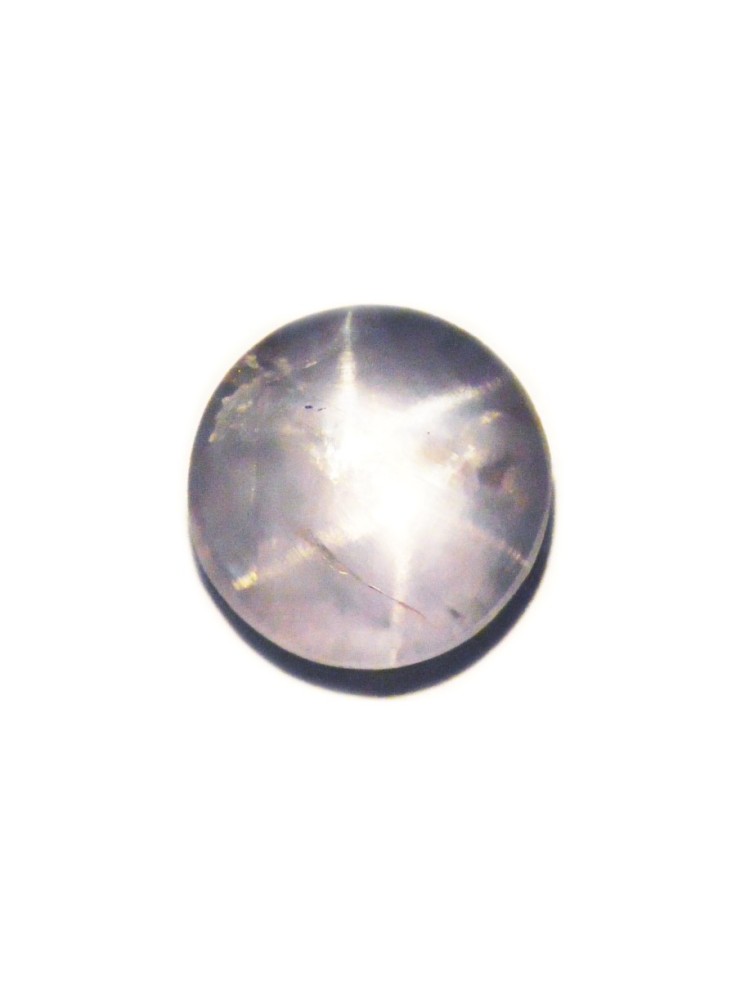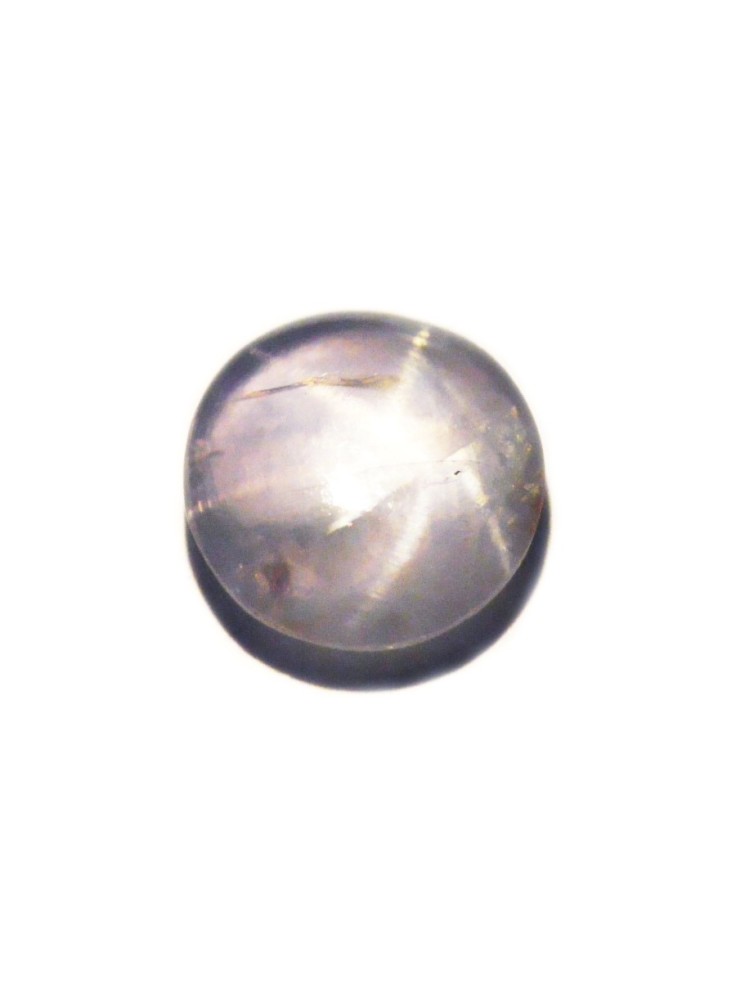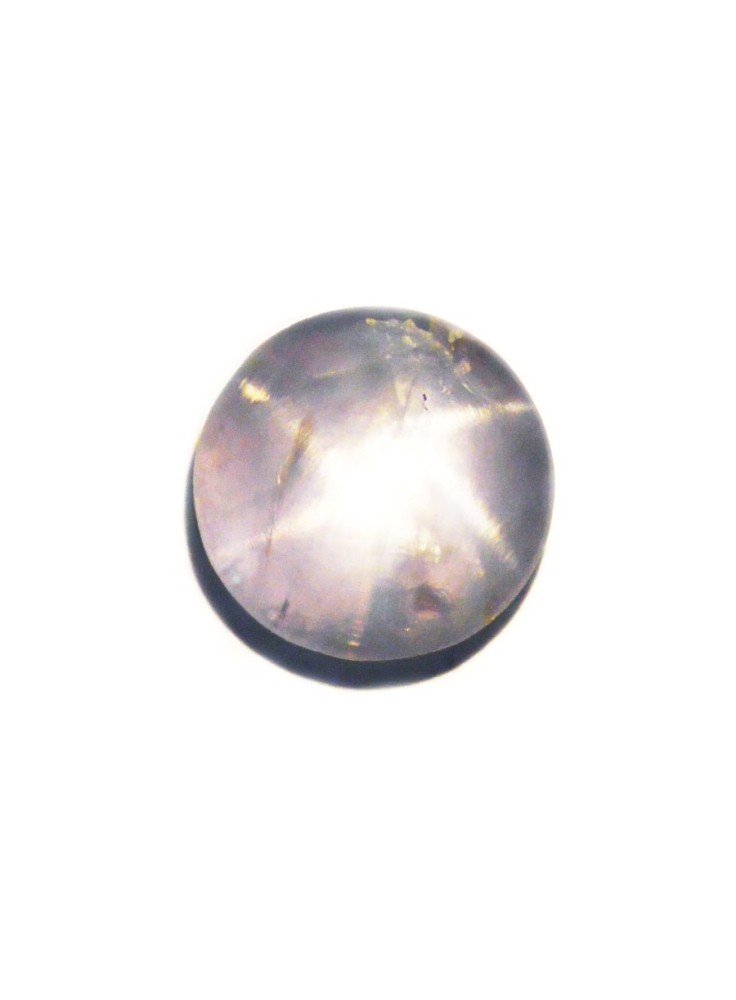
STAR SAPPIRE TWIN STAR 3.54 CTS 12110 - RARE COLLECTORS GEM
| Product Code: | 12110 |
| Availability: | In Stock |
-
$150.00
| Carats | 3.54 |
| Size | 9.3 mm |
| Color | Blue Grey |
| Clarity | Translucent |
| Shape | Round |
| Treatment | None |
| Origin | Sri Lanka |
| Location | Colombo,Sri Lanka |
| Price | $ 150.00 |
100% Natural - Not treated in any way.
Beautiful Center-stone for an engagement Ring.
Will make a Gorgeous Ring or Pendent accented with Diamonds.
Beautiful sharp Star effect.
A Gem of Lasting Beauty.
Asterism (or Ray Effect) is best seen in Bright Sunlight or by focusing a Flashlight on the face of the gem.
R.I. :1.759-1.778 Hardness : 9
Chemical Comp. : AL2O3
Density :4.00
Crystal Group :Hexagonal
Double star Sapphires display a double star By light reflecting off the silky crystallizations of rutile inside called asterism. Double-Stars display twin asterism this rare feature is called Poly-Asterism , Please see Gemmological details,Double Stars are much sought-after by Gemmological I nstitutions and Students of Gemology and are extremely rare.A largely overlooked form of asterism consisting of dual-color double stars is found in natural sapphire, in diffusion-treated and non-diffusion-treated synthetic rubies and sapphires, and in natural quartz. To characterize and explain this phenomenon, examples of these materials were examined. In transparent or translucent samples, an optical pattern of a white six-rayed star and a bodycolored (e.g., red, orange, yellow, green, blue) six-rayed star was frequently observed. Grinding and repolishing experiments showed that the asterism of part of the synthetic samples was produced or enhanced by diffusion treatment. The mechanism responsible for the formation of the dual-color double stars is discussed. To produce the pattern, acicular inclusions must either be present in relatively thin layers confined to the dome and the base of diffusion-treated ruby or sapphire cabochons, or be distributed throughout the complete corundum (natural or synthetic) or quartz samples. The white star is caused by interaction of light with the upper layer of the cabochon’s dome. The bodycolored star, in contrast, is generated by light that enters the cabochon, is reflected and scattered at the base layer of the cabochon, and then travels a second time back through the body of the sample. As further prerequisites for observation of the phenomenon, the gemstones must be transparent or translucent, with polished base and dome.
Beautiful Center-stone for an engagement Ring.
Will make a Gorgeous Ring or Pendent accented with Diamonds.
Beautiful sharp Star effect.
A Gem of Lasting Beauty.
Asterism (or Ray Effect) is best seen in Bright Sunlight or by focusing a Flashlight on the face of the gem.
R.I. :1.759-1.778 Hardness : 9
Chemical Comp. : AL2O3
Density :4.00
Crystal Group :Hexagonal
Double star Sapphires display a double star By light reflecting off the silky crystallizations of rutile inside called asterism. Double-Stars display twin asterism this rare feature is called Poly-Asterism , Please see Gemmological details,Double Stars are much sought-after by Gemmological I nstitutions and Students of Gemology and are extremely rare.A largely overlooked form of asterism consisting of dual-color double stars is found in natural sapphire, in diffusion-treated and non-diffusion-treated synthetic rubies and sapphires, and in natural quartz. To characterize and explain this phenomenon, examples of these materials were examined. In transparent or translucent samples, an optical pattern of a white six-rayed star and a bodycolored (e.g., red, orange, yellow, green, blue) six-rayed star was frequently observed. Grinding and repolishing experiments showed that the asterism of part of the synthetic samples was produced or enhanced by diffusion treatment. The mechanism responsible for the formation of the dual-color double stars is discussed. To produce the pattern, acicular inclusions must either be present in relatively thin layers confined to the dome and the base of diffusion-treated ruby or sapphire cabochons, or be distributed throughout the complete corundum (natural or synthetic) or quartz samples. The white star is caused by interaction of light with the upper layer of the cabochon’s dome. The bodycolored star, in contrast, is generated by light that enters the cabochon, is reflected and scattered at the base layer of the cabochon, and then travels a second time back through the body of the sample. As further prerequisites for observation of the phenomenon, the gemstones must be transparent or translucent, with polished base and dome.







